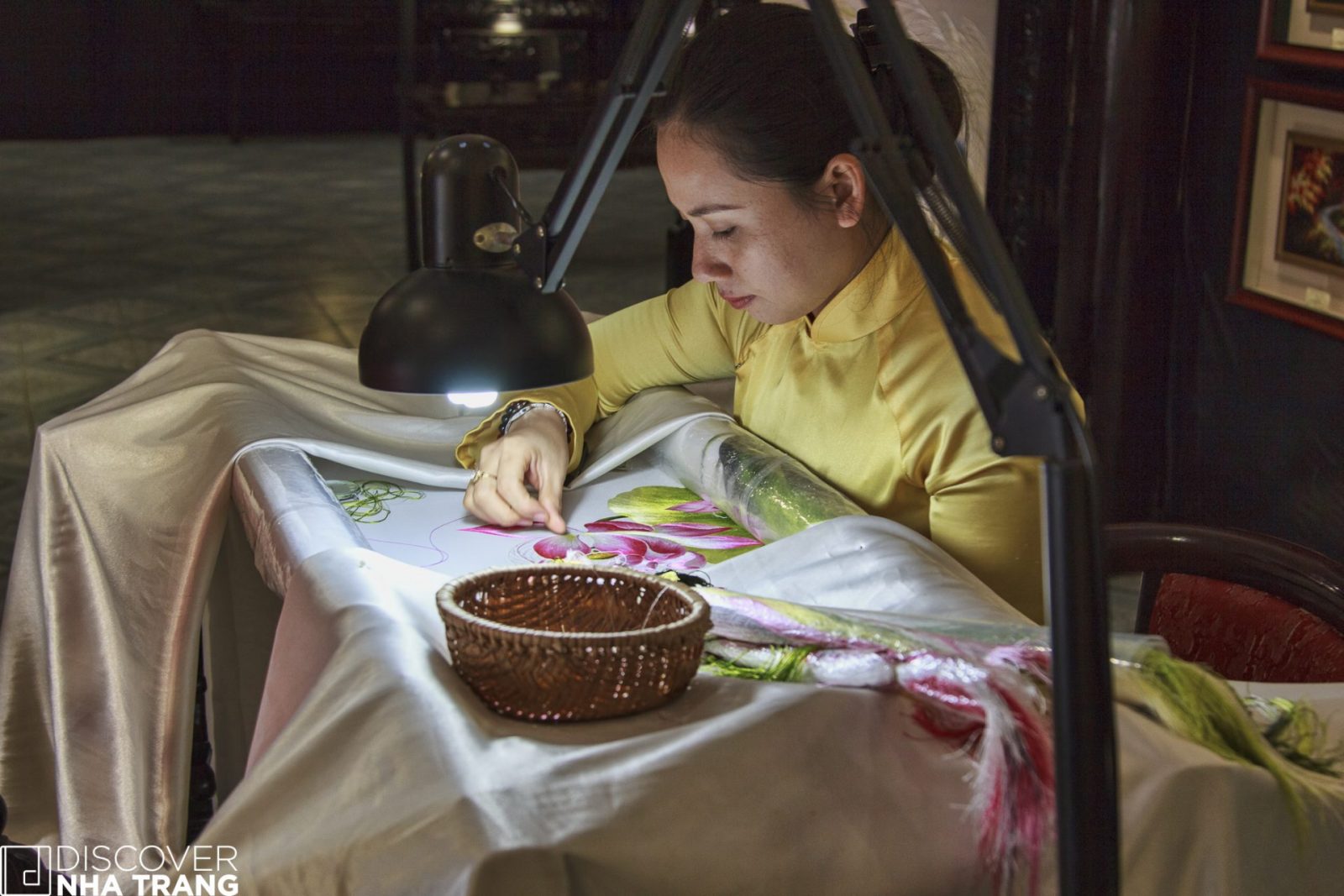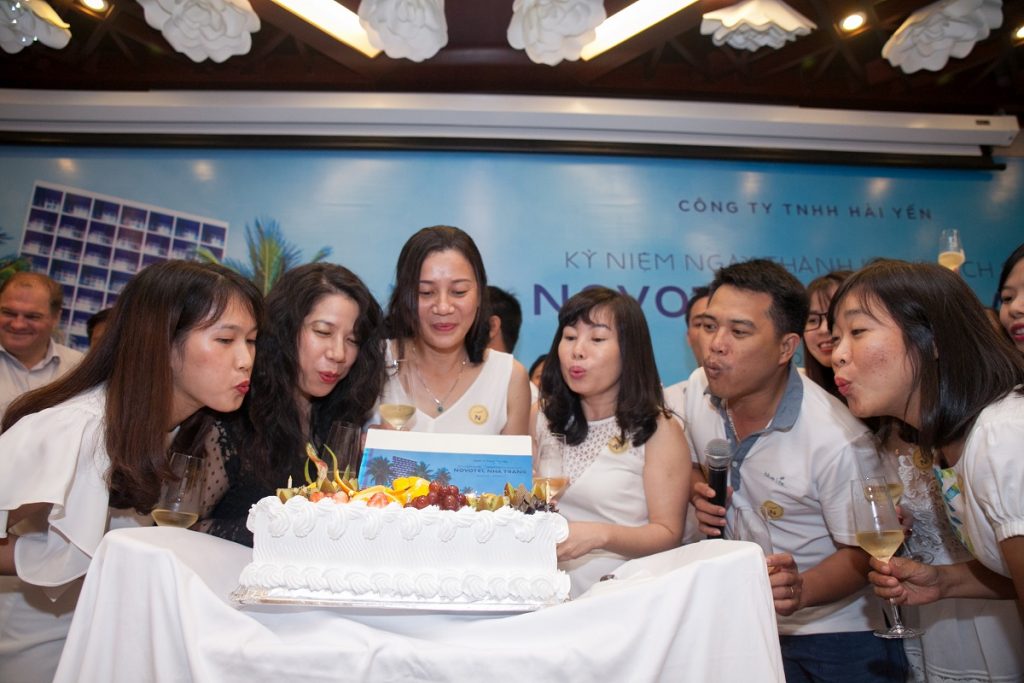XQ HISTORICAL VILLAGE

Where history and culture meet amazing artists
Since the ancient times, embroidery and the needle have been the soulmates of Vietnamese women. Indeed, in days gone by, one of the measures of a womans virtue was said to be her skill in the art of embroidery. While perhaps not politcally correct today, it is an interesting fact, and a reflection of the standards of the time, and as the old Vietnamese saying goes,“Men read books and recite poems, while women embroider and sew.”
The images of graceful women working industriously on tambours were once a very familiar sight, and all older people have strong memories of seeing the them at work. Nowadays, it is not so commonly seen, but at the XQ Historical Villages in Dalat, Hue, Hanoi, Saigon, and here in Nha Trang, there is the chance to watch charming ladies in Áo Dài (Vietnamse traditional dress) sitting with the embroidery frames and producing remarkably beautiful works.

Located at 64 Tran Phu St, in the heart of the tourist hub, XQ Historical Village is a private wonderland of the art of embroidery. In this lively craft village, visitors can immerse themselves in admiration of the intricate embroidery works and take in some of the historic photographs and items on display.
Created in 1999, XQ is the brainchild of Madam Hoang Le Xuan, a Royal lady born in Hue, and her husband Sir Vo Van Quan. They are a talented artistic couple who first conceived the idea to combine the traditional art of embroidery and painting, and have made it a real career, not only for themselves, but for more than 3500 craftspeople throughout country. The creation of these works of art are seen by some to reflect life itself, with an idea being conceived, being born onto silk, going through failures and challenges along the way, then finally success and happiness as the piece finally is completed.

The process is long and intricate, with a great number of craftsmen and artists involved in its final creation. The first step sees an artist draw the basic outline using just a pencil. Following this, they use a special needle to make holes in a sheet of paper. Now, it is time to put the picture on cloth, and this is achieved using a special combination of flour and oil to get the details perfectly set. The artist and embroiderist will then sit together and discuss the technical apsects so that the correct threads can be obtained. Finally, the craftsmen starts the long and painstaking job of threading every tiny line and threadhole with an aray of colorful silk.
The time taken to produce these classic works is daunting to say the least. While a normal landscape may take 2-3 months, a portrait picture will take around 5 months or more to complete. They are both examples of single-sided embroidery, but the double sided versions can take vastly more time and effort to produce, and some of the larger works on display have been created over an entire year.
Different from a normal picture created by pencil or brush, handmade silk embroidery is intertwined with traditional music, poetry and painting. The artists believe that working in the right atmosphere is vital to help express the ideas and beauty that the original artist first conceived. Hence, one can hear music and poetry within the working spaces and gallerys as it is not only a showroom, but also an active and functioning artists’ studio. That is also the reason why the artists only work on their embroidery at the historical village, inspired by harmonious music, the emotive melodies of poems while sipping flavorful Vietnamese tea!

XQ has also developed a very particular company culture, being totally dedicated the pursuit of perfection and adherence to strong cultural values. All craftspeople wear traditional clothes and are encouraged to further their education by reading books and poems to develop new ideas. Once a work is complete, it is sent to the XQ Village in Dalat where it is inspected and assessed by a group of master craftsmen who decide if it is fit for release or should be returned for modification.
Being so close to the sea, its influence on XQ Cultural Village is profound, and every Monday, the staff conducts a ceremony where sea water is placed at an altar as an expression of gratitude to the ocean. There is also an incense burning ritual performed each Saturday as a mark of respect the inventor of the of the art style, Sir Le Cong Hanh.

Open from 7:30am until 10:00pm, XQ Historical Village, with its ancient architecture, superb works of art and working craftsmen is a uniquely cultural location for anyone visiting Nha Trang. If you are an appreciator of fine art, then it is even more impressive, and you will be very tempted to take something home. They say, “A picture tells a thousand words”, but the original works here are far more expressive than that, telling a thousand years or more of art, culture and traditon in Vietnam.

